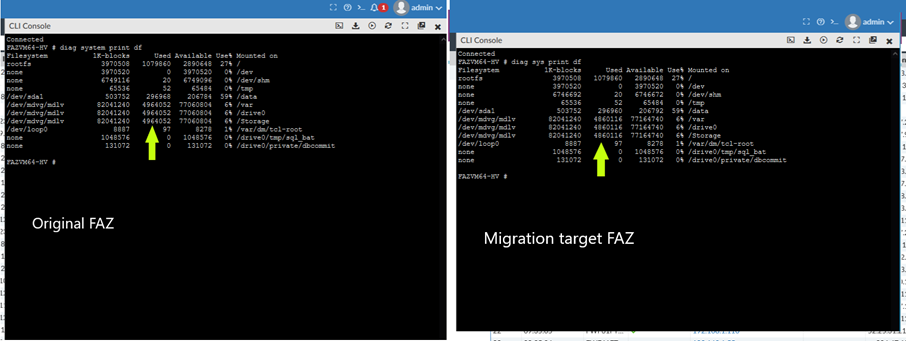- Forums
- Knowledge Base
- Customer Service
- FortiGate
- FortiClient
- FortiAP
- FortiAnalyzer
- FortiADC
- FortiAuthenticator
- FortiBridge
- FortiCache
- FortiCarrier
- FortiCASB
- FortiConnect
- FortiConverter
- FortiCNP
- FortiDAST
- FortiDDoS
- FortiDB
- FortiDNS
- FortiDeceptor
- FortiDevSec
- FortiDirector
- FortiEDR
- FortiExtender
- FortiGate Cloud
- FortiGuard
- FortiHypervisor
- FortiInsight
- FortiIsolator
- FortiMail
- FortiManager
- FortiMonitor
- FortiNAC
- FortiNAC-F
- FortiNDR (on-premise)
- FortiNDRCloud
- FortiPAM
- FortiPortal
- FortiProxy
- FortiRecon
- FortiRecorder
- FortiSandbox
- FortiSASE
- FortiScan
- FortiSIEM
- FortiSOAR
- FortiSwitch
- FortiTester
- FortiToken
- FortiVoice
- FortiWAN
- FortiWeb
- Wireless Controller
- RMA Information and Announcements
- FortiCloud Products
- ZTNA
- 4D Documents
- Customer Service
- Community Groups
- Blogs
- Fortinet Community
- Knowledge Base
- FortiAnalyzer
- Technical Tip: Log data migration limitations betw...
- Subscribe to RSS Feed
- Mark as New
- Mark as Read
- Bookmark
- Subscribe
- Printer Friendly Page
- Report Inappropriate Content
Created on
08-22-2021
11:17 AM
Edited on
12-20-2022
01:17 AM
By
![]() Jean-Philippe_P
Jean-Philippe_P
Description
This article describes consequences of improper disk migration on FortiAnalyzer VMs.
FortiAnalyzer VM, in current releases, uses Local Volume Manager (LVM) libraries to map and control block storage devices attached to virtual machine.
From a system administrator point of view, this allows an easy storage extension.
Solution
When a FortiAnalyzer VM is launched for the first time, the system will be started from a virtual disk which is included in the downloaded image from the support portal, and the second data drive will be prepared on initial start by creating a LVM structure on the disk and formatting the volume to ext4 filesystem.




Related Articles
Technical Tip: Extending disk space in FortiAnalyzer VM / FortiManager VM
Technical Tip: How to migrate a FortiAnalyzer logs and config to a new system
The Fortinet Security Fabric brings together the concepts of convergence and consolidation to provide comprehensive cybersecurity protection for all users, devices, and applications and across all network edges.
Copyright 2024 Fortinet, Inc. All Rights Reserved.